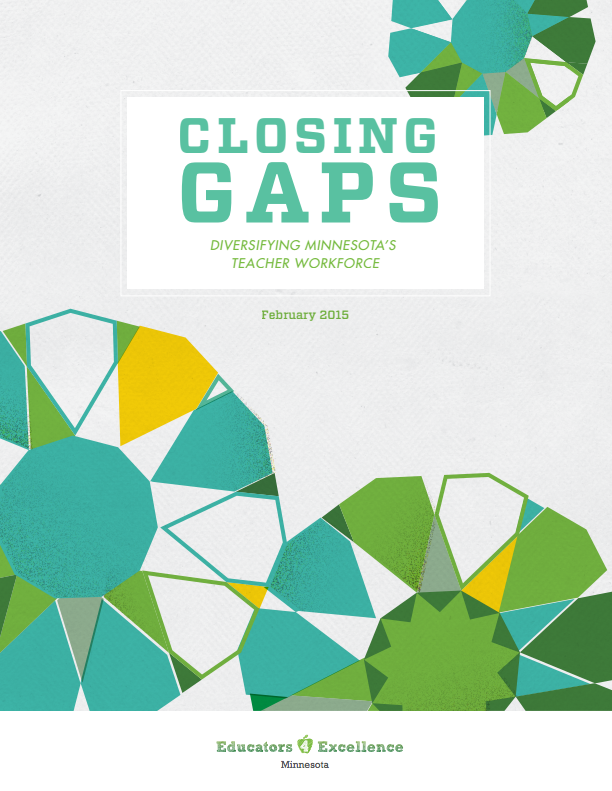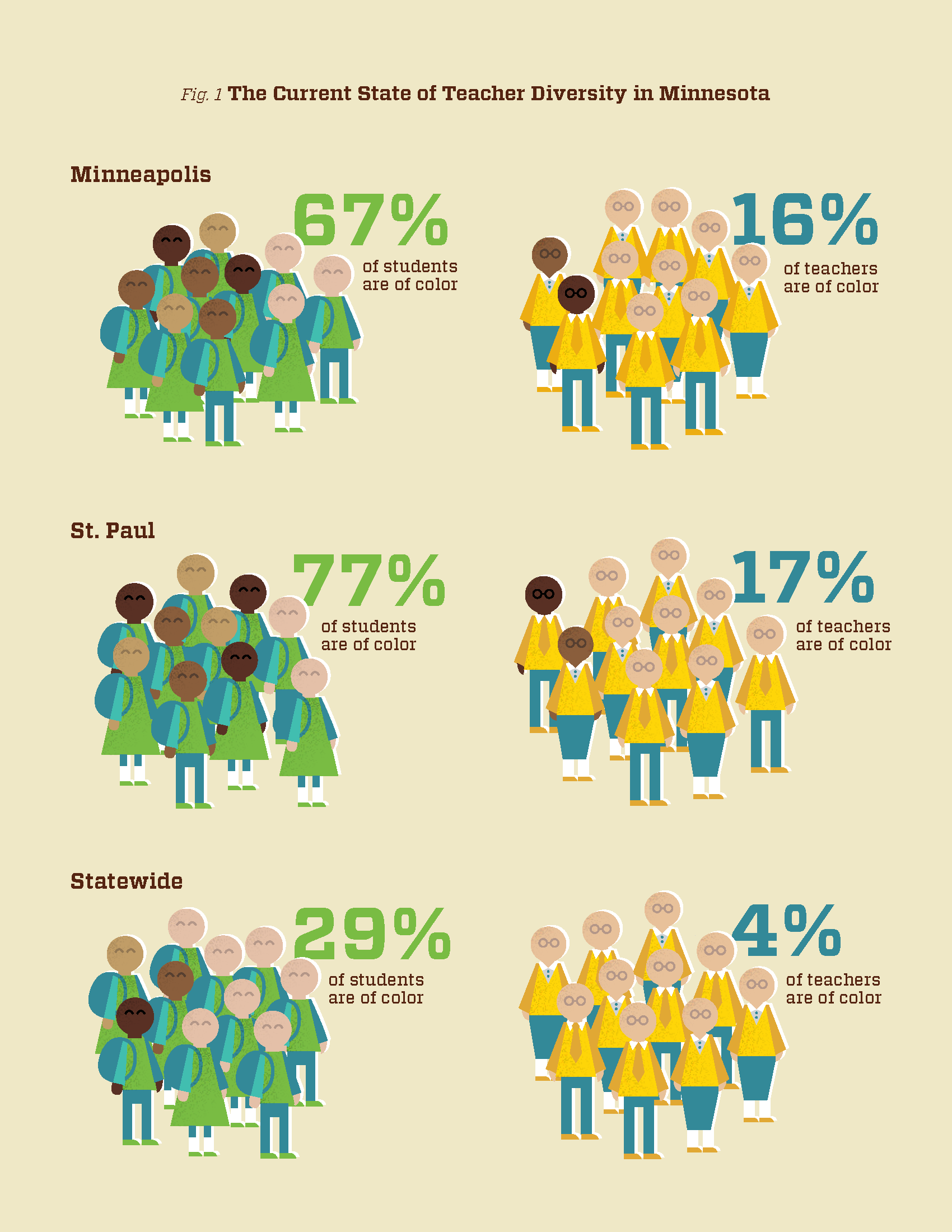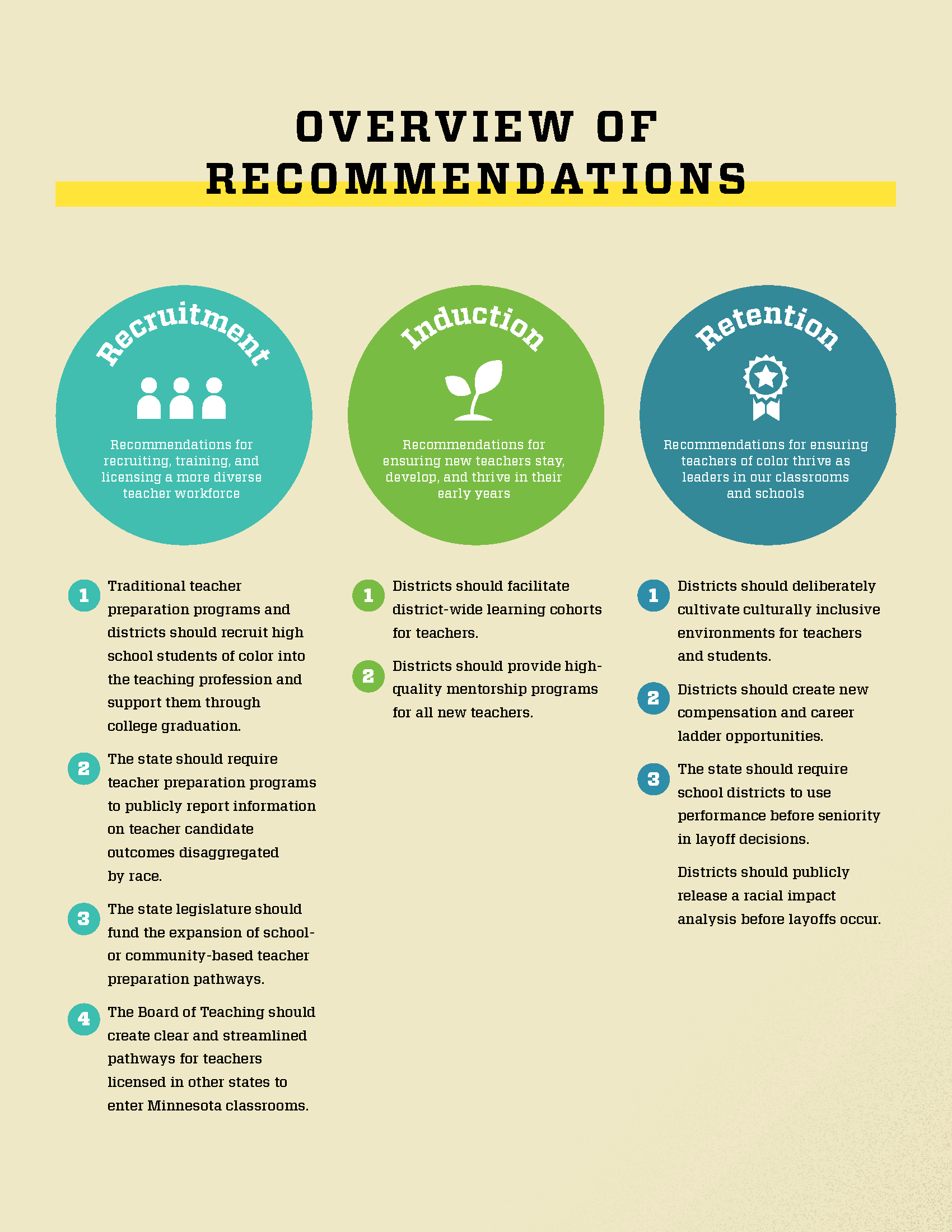
Closing Gaps
Diversifying Minnesota's Teacher Workforce
February 2015

Research confirms there are social, emotional, and academic benefits to having teachers of color for both white students and students of color. Currently, however, a child’s chance of having an African-American or Latino male teacher during his or her K-12 experience is one in 50, a statistic we find unacceptable.

Ultimately, to reach all of our students, we must ensure Minnesota has a teacher workforce that is representative of our students, culturally competent, and highly effective. The professional pipeline for teachers of color can be strengthened at all stages– from recruitment, induction, and retention. Through action at the state and local level, improved policies can help diversify the teacher workforce and elevate the profession as a whole.
Recommendations:
-
Recruit and support prospective teacher candidates of color from high school through college.
-
Publicly report teacher preparation program outcomes with data disaggregated by race.
-
Expand school or community-based teacher preparation pathways.
-
Create clear pathways for teachers licensed in other states to enter Minnesota’s classrooms.
-
Establish content-based teacher cohorts to support teacher growth throughout their first three years.
-
Provide mentorship programs for all new teachers.
-
Cultivate culturally inclusive environments for teachers and students.
-
Create new compensation and career ladder opportunities, and factor performance before seniority in layoff decisions.
About the Teacher Action Team
We are a team of 16 teachers who met over the course of three months to review research on recruitment, induction and retention of teachers of color. We conducted interviews with teacher colleagues, district leaders and other education stakeholders. We also held focus groups, surveyed colleagues and hosted a large-group listening session to gather feedback and finalize our recommendations. In total, we gathered feedback from more than 200 educators.
Amanda Appell Special Education Teacher in the SPAN Program at Northeast Middle School
Karina Casarrubias Kindergarten Teacher at Northrop-Hiawatha Leadership Academy
Grecia Zermeno-Castro Math Teacher at Bancroft Elementary IB World School
Phil Clomon 7th- and 8th-grade Social Studies Teacher at Creative Arts Secondary School
Sarah Clyne Former Executive Director of Joyce Preschool
Paula Cole Executive Director of E4E-Minnesota
Dewayne Combs Teacher for Academic Support at Johnson Senior High School
Mitch Cooper Human Relations Manager at Intermediate School District 287
La Shawn Hankton Special Education Resource Intervention Support Staff at Jefferson Elementary
Anthony Hernandez 3rd-grade Teacher at Global Academy
James Kindle New-to-country Accelerated Bilingual Academic Development (NABAD) Teacher at Anne Sullivan Communication Center
Ben MacKenzie High School English Teacher at FAIR School
Ayan Mohamed New-to-country Accelerated Bilingual Academic Development (NABAD) Teacher at Anne Sullivan Communication Center
Henriette Ngo-Bissoy Science Teacher at L’Etoile du Nord French Immersion
Maetzin Saenz Education Assistant at Paul and Sheila Wellstone Elementary
Lee-Ann Stephens High Achievement Program Advocate at St. Louis Park Senior High
